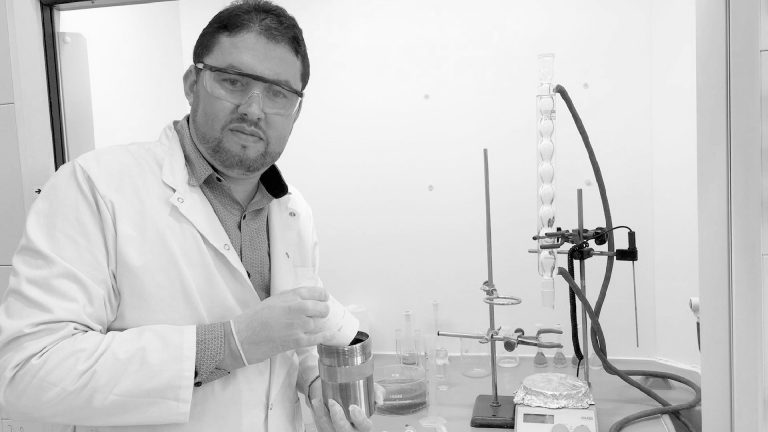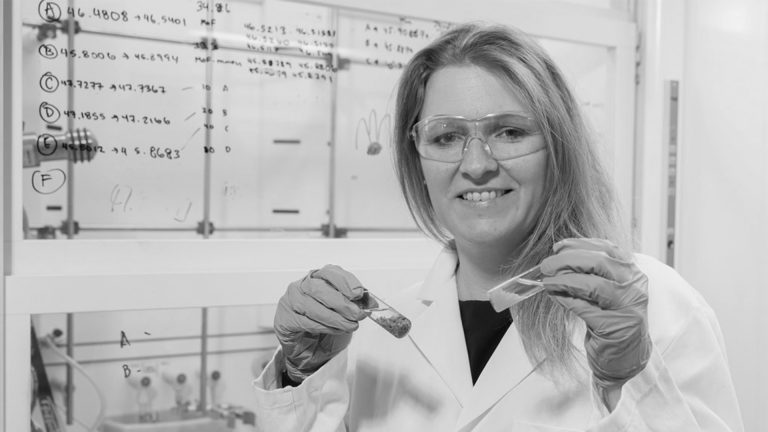
Samir El Hankari received his PhD degree in the synthesis of nanostructured silica hybrid materials in 2012 from the University of Montpellier 2 (France). He then joined four different teams as a post-doc researcher in United Kingdom, Morocco, China and Austria.
He has experience in organic synthesis and materials science, particularly: i) sol-gel, ii) nanostructured porous silica bearing organo-ionic species, iii) templating and processing of mesoporous Metal-organic frameworks (MOFs), MOF capsules and MOF@oxide composites and evaluating their practical application in catalysis, sensing and adsorption. Recently, his experience has been extended to the Sol-gel of MOFs, bio-polymer@MOFs and ceramic@MOFs composites as well as their shaping into membranes, films and monoliths.
Since September 2019, Samir joined Mohammed VI Polytechnic University in Chemical & Biochemical Science (CBS) department as an Assistant Professor in inorganic chemistry – hybrid materials with major interests on the development of sustainable synthesis, and processing of porous organic-inorganic materials such as MOFs and their composites as well as porous silica hybrid materials for the adsorption, sensing, and (photo)catalysis.

Wendy L. Queen obtained her PhD in chemistry from Clemson University (August 2009). Her dissertation was focused on the synthesis and characterization of extended solids that contain low-dimensional magnetic nanostructures. Upon receipt of her PhD, she was awarded a fellowship from the National Research Council to study neutron scattering at the NIST Center for Neutron Research in Gaithersburg MD. Here she chose to focus her work on elucidating small molecule interactions on the internal surface of porous adsorbent materials, such as metal-organic frameworks and zeolites.
In 2012, she was appointed a project scientist position at the Molecular Foundry at Lawrence Berkeley National Laboratory in Berkeley CA where she helped launch a new user program focused on the synthesis and characterization of porous adsorbents. In 2015, she was appointed Assistant Professor in the Institute of Chemical Sciences and Engineering at EPFL. Her research is currently focused on the synthesis and characterization of novel porous adsorbents, namely metal-organic frameworks, that are of interest in a number of host-guest applications.
The ultimate goal of her research is to contribute knowledge towards solving globally relevant problems, like reducing energy consumption, developing sustainable processes, cutting CO2 emissions, and water purification. Her desire is to help train a new generation of researchers that have the knowledge and scientific skill set necessary to become future frontrunners in energy and environmentally-related research.
Metal-organic frameworks (MOF) are a class of highly porous, sponge-like materials that have diverse applications, such as water purification, gas storage and separations, and catalysis. This research team sees a bigger picture: they will design reactive MOFs that can capture CO2 from gas mixtures and subsequently transform this greenhouse gas into value-added products.
Summary
Since El Hankari’s arrival at UM6P, his main interest has been the design and synthesis of new porous hybrid materials. His particular focus is on the development of sustainable approaches for the fabrication of Metal-organic frameworks (MOFs) and MOF composites to target applied research in water cleaning, catalysis, sensing and meanwhile solve some of issues encountered in phosphate industry. In this context, Samir was delighted to receive an EXAF grant within the frame of the JFD programme to work in close collaboration with Prof. Wendy Lee Queen from the Institute of Chemical Sciences and Engineering at EPFL.
Our project focuses on the design and development of new MOFs and MOF composites for the implementation of new catalytic technology-based MOF in CO2 conversion, which consists of constructing new bi- or multi-functional MOF catalysts. These catalysts contain different sites to simultaneously reduce CO2 emission and provide new source of energy by converting CO2 to value added product, which has relevance to environment and energy.
Keywords: Metal-organic frameworks, Bi- or multi-functional sites, Catalysis, CO2 conversion, Value added product